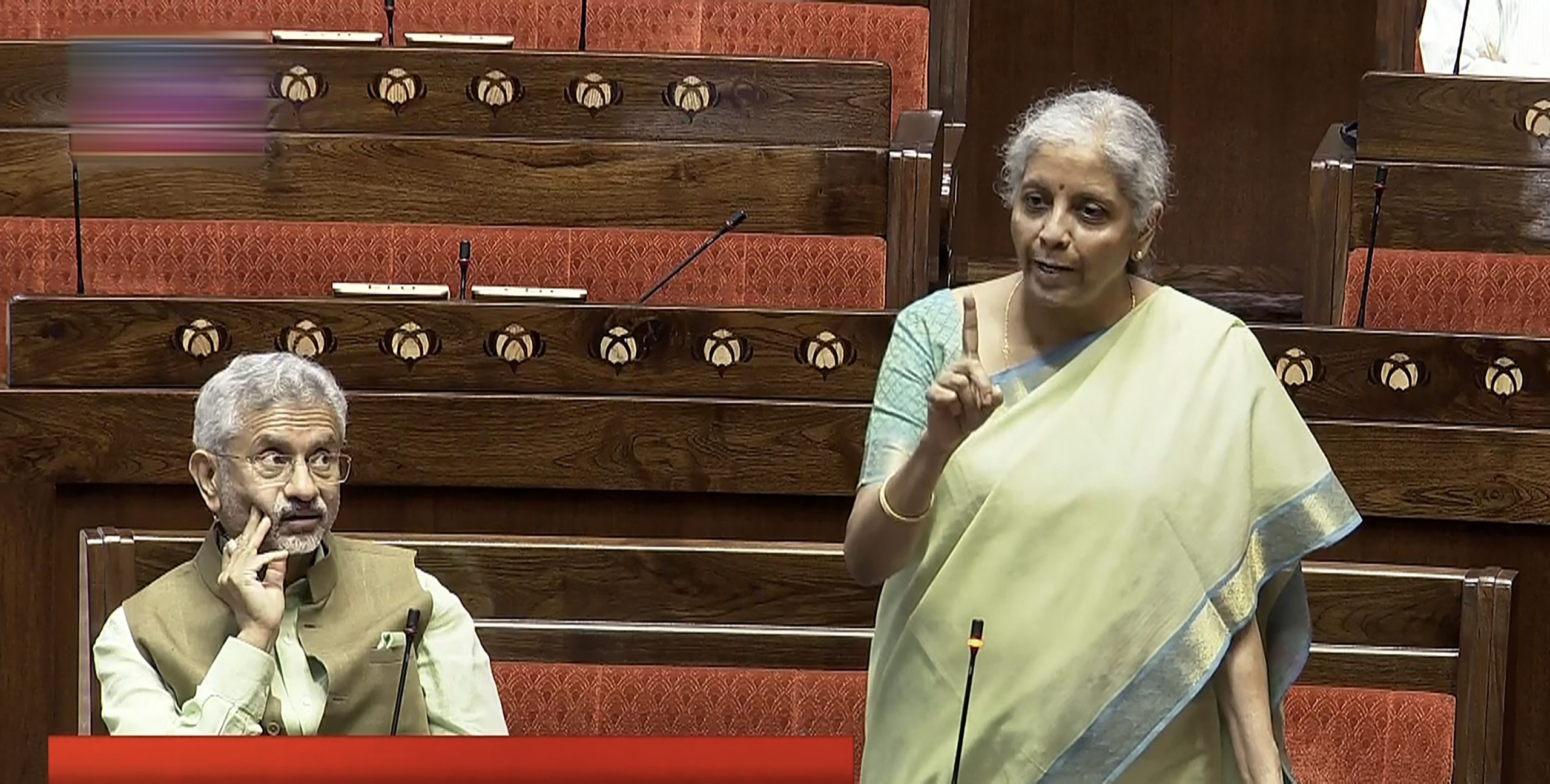Focus on Agriculture, Employment, and Trade
By Shivaji Sarkar
The budget for 2025-26 poses a significant challenge for Finance Minister Nirmala Sitharaman, who is faced with critical tasks such as controlling inflation, enhancing consumption, encouraging private investment, and managing India’s growth amidst worries about a slowing economy.
On an international level, she must also confront possible economic challenges arising from the policies of newly-elected US President Donald Trump, which may lead to increased petrol prices and a stronger dollar, complicating India’s economic landscape.
At home, urban consumption—once a reliable engine for growth—has declined, and private investment continues to lag. India’s growth rate has dropped to a two-year low of 5.4 percent, with annual growth forecasts for 2024-25 revised down to 6.4 percent, a considerable fall from 8.2 percent in 2023-24. Nevertheless, the Reserve Bank of India remains hopeful, asserting that the nation’s structural growth drivers are fundamentally sound.
In addition, the rural economy and agriculture sector require immediate attention. Indian agriculture is confronted with numerous challenges, such as a burgeoning population, diminishing land resources, climate change, increasing nutritional needs, labour shortages, mechanization, price volatility, and environmental issues. Addressing these challenges is vital for achieving inclusive and sustainable development.
The government intends to boost agricultural expenditure by 15 percent to $20 billion in the upcoming budget, targeting improvements in rural incomes and inflation control. This funding will prioritize the development of high-yield crops, enhancement of storage and supply chain infrastructure, and promotion of pulse, oilseed, vegetable, and dairy production. However, the short-term impact remains uncertain, as these initiatives often require time to yield results.
Agriculture is still the cornerstone of the Indian economy, necessitating focused efforts to improve productivity, foster resilience, and create alternative income sources for small and marginal farmers.
The Food and Agriculture Organisation (FAO) report, Regional Overview of Food Security and Nutrition 2023, highlighted that 74.1 percent of Indians could not afford a nutritious diet in 2021, showing a slight improvement from 76.2 percent in 2020. However, the 2024-25 budget made only modest progress in tackling these challenges.
RBI Governor Sanjay Malhotra expressed optimism in the bi-annual report, projecting that the Indian economy would gain traction by the end of the current fiscal year, despite global uncertainties. Deloitte India also noted cautious optimism, pointing to the government’s focus on infrastructure development as a potential driver for growth.
The latest NSSO Household Consumption Expenditure survey reveals a stark contrast between rural and urban incomes, with average rural MPCE (Monthly Per Capita Consumption Expenditure) at only 58 percent of urban MPCE. While reforms intended to elevate rural income have been initiated in recent years, the pace of progress has been slow. Over the past five years, approximately 3 percent of the total budgeted expenditure has been allocated to the Ministries of Agriculture, Fisheries, Animal Husbandry, and Dairying, indicating a need for more substantial support.
Farmers continue to grapple with the issues of small and fragmented land holdings, limited mechanization, and insufficient irrigation facilities. Notable concerns faced by farmers in India include soil fertility depletion and inadequate access to crop insurance programs.
Small and marginal farmers, who represent more than 82 percent of the farming community, depend significantly on agriculture for their livelihoods. Expanding funding for related activities such as agroforestry, animal husbandry, and fisheries can provide essential additional income streams. Investments in cattle farming, poultry, sheep rearing, and small-scale fisheries, including shrimp farming, can significantly enhance rural incomes.
Encouraging natural and organic farming through certification, branding, and the provision of bio-inputs via dedicated resource centres can further align agricultural practices with sustainability goals. Enhanced budgetary support for organic fertilizer production, utilizing resources like cow dung, will promote self-sufficiency in farming inputs while reducing reliance on chemical fertilizers, which is a key aim of the government.
While advocating for reduced use of urea, DAP, nitrogen, phosphate, and potash is ideal, the reality remains challenging due to the high level of imports. Despite rising costs, the government has maintained a subsidy of Rs 3850 per tonne of DAP and has kept prices from three years ago at Rs 1350, while actual prices have surged to Rs 2000 for 50 kg bags.
Agriculture employs 54 percent of India’s workforce but accounts for only 18 percent of India’s GVA, highlighting the urgent need to boost productivity in this sector. According to an IMF paper, India’s labour productivity (PPP adjusted) in agriculture is just 12.2 percent of the median productivity in advanced economies and 43 percent of that in emerging markets. Addressing farmers’ challenges and promoting the adoption of new technologies in remote areas has become increasingly complex, along with securing favorable marketing conditions and prices. The agricultural sector, being wholly private, is also vulnerable to environmental uncertainties. Food has been heavily subsidized in the US for decades.
The government must navigate a delicate balance. The debt burden is significant. Infrastructure investments, including roads, have benefitted corporations; however, rising tolls and input costs have strained Indian agriculture. Moreover, road projects have led to the loss of 50 lakh hectares of arable land.
The government also has to contend with the new wave of Trumpism, which is likely to exert pressure on international markets, affect petrol prices, and influence alternative energy policies, as well as impact Indian exports and employment. Thus, a broader strategy beyond agriculture is essential. The advancements in IT and AI are impacting Indian enterprises, resulting in further job challenges. Although the RBI claims that banks are healthy, issues related to deposit thaw remain.
Manufacturing and other sectors are constrained by the limited purchasing power of consumers. The Finance Minister must devise new policies to maintain low manufacturing costs to keep inflation manageable. A reassessment of GST is advisable, though it may remain a distant hope.
With little room to maneuver on taxation, there are calls for revisiting income tax policies, especially since the government reduced corporate taxes to 22 percent. While some adjustments may be considered, reducing tax rates may prove challenging. Furthermore, rising railway fares and transportation costs raise questions about her ability to manage these aspects.
While agriculture is indeed the pillar of the Indian economy, striking a balance between its needs and those of other sectors poses a substantial challenge. Although the budget process generates considerable anticipation, significant breakthroughs are unlikely to emerge. Following the budget, the nation must redefine its economic objectives, striving to evolve into a low-cost, fast-growing economy. Merely boasting about achieving “trillions in record economic size” will not change the course of the nation. —INFA
(Copyright, India News & Feature Alliance)
New Delhi 25 January 2025
The post FM Basket Full, TrumpismABarb appeared first on Daily Excelsior.


Leave a Reply